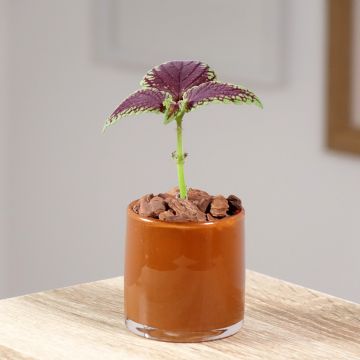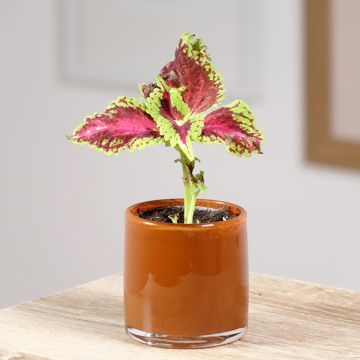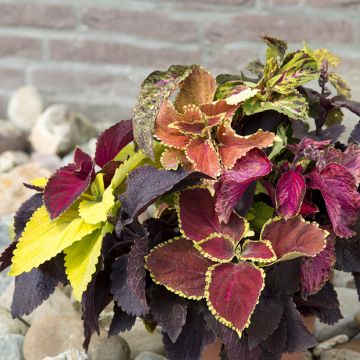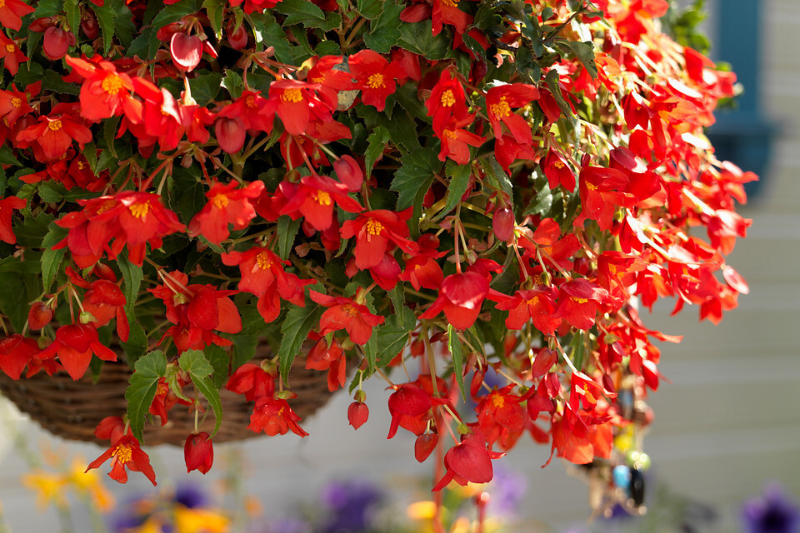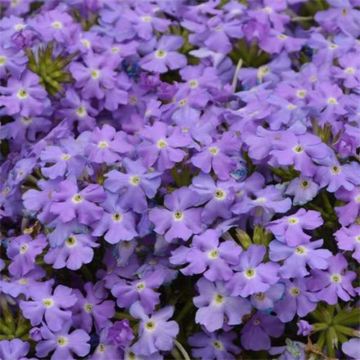

Coleus Vulcan
Coleus Vulcan
Coleus Vulcan
Coleus
Special offer!
Receive a €20 voucher for any order over €90 (excluding delivery costs, credit notes, and plastic-free options)!
1- Add your favorite plants to your cart.
2- Once you have reached €90, confirm your order (you can even choose the delivery date!).
3- As soon as your order is shipped, you will receive an email containing your voucher code, valid for 3 months (90 days).
Your voucher is unique and can only be used once, for any order with a minimum value of €20, excluding delivery costs.
Can be combined with other current offers, non-divisible and non-refundable.
Home or relay delivery (depending on size and destination)
Schedule delivery date,
and select date in basket
This plant carries a 6 months recovery warranty
More information
We guarantee the quality of our plants for a full growing cycle, and will replace at our expense any plant that fails to recover under normal climatic and planting conditions.
Would this plant suit my garden?
Set up your Plantfit profile →
Description
Coleus 'Vulcan' is adorned with particularly unique foliage, both in its finely toothed shape and its colour. Its leaves are pink and purple, edged with a fine golden yellow line. It forms a clump with an upright and dense habit. Tender, Coleus can be grown as indoor plants or as annuals in borders or containers. They are easy to grow and highly decorative plants that will undoubtedly find their way into your garden, balcony, or even your interior.
Coleus, also known as Solenostemon or Plectranthus, belong to the Labiate family, like basil. They share the same bilabiate flowers with elongated lower lips and square-sectioned stems. While basil offers us aromatic leaves, coléus captivates our attention with its decorative foliage. This genus comprises around sixty species of non-hardy shrubby perennials, native to Asia and tropical Africa. Today, there are numerous hybrids and cultivars of coléus that are increasingly remarkable.
Coleus 'Vulcan' has an upright and well-branched habit. It can reach between 40 and 60cm in all directions. Its leaves are nicely toothed with rounded edges. They display a gradient ranging from reddish pink to purple, from the inside out, and are finely bordered with lemon yellow. Sometimes, a slight black colouration can be seen on the foliage. Flowering is rare, if not non-existent, in this selection. The inconspicuous flowers occasionally appear in late summer. Remove them to avoid exhausting the plant and to fully enjoy its foliage.
Coleus, nicknamed 'painted nettle' due to their foliage that appears to be painted by an inspired artist, find their place in borders, edging, and containers. Grow them as indoor plants and enjoy their foliage for several years. In containers, pair Coleus 'Vulcan' with Begonia 'Switzerland', with red flowers. Due to their brightly coloured foliage, Coleus can sometimes be challenging to combine. To accompany them in a border, consider the fern Polypodium 'Whitley Giant' in shade and Lobelia 'Anabel Snow White' in sun or partial shade.
Report an error about the product description
Flowering
Foliage
Plant habit
Botanical data
Coleus
Vulcan
Lamiaceae
Coleus
Cultivar or hybrid
Other Coleus
View all →Planting and care
The 'Vulcan' Coleus is an easy-to-grow plant that tolerates both sun and shade. Plant them after the last frost, sheltered from the wind. However, avoid scorching sun. Provide it with a light and humus-bearing soil, but well-drained. Your cilium will also thrive in a pot, so make sure to water it regularly without letting the water stagnate in the saucer. Every fifteen days, apply a little liquid fertilizer from June to September. Remove the flowers as soon as they appear to prolong the life of the plant. Usually grown as an annual, it is actually a frost-tender perennial: by bringing it indoors at the first frost, you can extend its life for a few years and cultivate it as an indoor plant. In mild coastal climates, it can survive the winter by mulching its neck well and lightly pruning it in March, ready for a new season.
Planting period
Intended location
Care
Planting & care advice
This item has not been reviewed yet - be the first to leave a review about it.
Similar products
Haven't found what you were looking for?
Hardiness is the lowest winter temperature a plant can endure without suffering serious damage or even dying. However, hardiness is affected by location (a sheltered area, such as a patio), protection (winter cover) and soil type (hardiness is improved by well-drained soil).

Photo Sharing Terms & Conditions
In order to encourage gardeners to interact and share their experiences, Promesse de fleurs offers various media enabling content to be uploaded onto its Site - in particular via the ‘Photo sharing’ module.
The User agrees to refrain from:
- Posting any content that is illegal, prejudicial, insulting, racist, inciteful to hatred, revisionist, contrary to public decency, that infringes on privacy or on the privacy rights of third parties, in particular the publicity rights of persons and goods, intellectual property rights, or the right to privacy.
- Submitting content on behalf of a third party;
- Impersonate the identity of a third party and/or publish any personal information about a third party;
In general, the User undertakes to refrain from any unethical behaviour.
All Content (in particular text, comments, files, images, photos, videos, creative works, etc.), which may be subject to property or intellectual property rights, image or other private rights, shall remain the property of the User, subject to the limited rights granted by the terms of the licence granted by Promesse de fleurs as stated below. Users are at liberty to publish or not to publish such Content on the Site, notably via the ‘Photo Sharing’ facility, and accept that this Content shall be made public and freely accessible, notably on the Internet.
Users further acknowledge, undertake to have ,and guarantee that they hold all necessary rights and permissions to publish such material on the Site, in particular with regard to the legislation in force pertaining to any privacy, property, intellectual property, image, or contractual rights, or rights of any other nature. By publishing such Content on the Site, Users acknowledge accepting full liability as publishers of the Content within the meaning of the law, and grant Promesse de fleurs, free of charge, an inclusive, worldwide licence for the said Content for the entire duration of its publication, including all reproduction, representation, up/downloading, displaying, performing, transmission, and storage rights.
Users also grant permission for their name to be linked to the Content and accept that this link may not always be made available.
By engaging in posting material, Users consent to their Content becoming automatically accessible on the Internet, in particular on other sites and/or blogs and/or web pages of the Promesse de fleurs site, including in particular social pages and the Promesse de fleurs catalogue.
Users may secure the removal of entrusted content free of charge by issuing a simple request via our contact form.
The flowering period indicated on our website applies to countries and regions located in USDA zone 8 (France, the United Kingdom, Ireland, the Netherlands, etc.)
It will vary according to where you live:
- In zones 9 to 10 (Italy, Spain, Greece, etc.), flowering will occur about 2 to 4 weeks earlier.
- In zones 6 to 7 (Germany, Poland, Slovenia, and lower mountainous regions), flowering will be delayed by 2 to 3 weeks.
- In zone 5 (Central Europe, Scandinavia), blooming will be delayed by 3 to 5 weeks.
In temperate climates, pruning of spring-flowering shrubs (forsythia, spireas, etc.) should be done just after flowering.
Pruning of summer-flowering shrubs (Indian Lilac, Perovskia, etc.) can be done in winter or spring.
In cold regions as well as with frost-sensitive plants, avoid pruning too early when severe frosts may still occur.
The planting period indicated on our website applies to countries and regions located in USDA zone 8 (France, United Kingdom, Ireland, Netherlands).
It will vary according to where you live:
- In Mediterranean zones (Marseille, Madrid, Milan, etc.), autumn and winter are the best planting periods.
- In continental zones (Strasbourg, Munich, Vienna, etc.), delay planting by 2 to 3 weeks in spring and bring it forward by 2 to 4 weeks in autumn.
- In mountainous regions (the Alps, Pyrenees, Carpathians, etc.), it is best to plant in late spring (May-June) or late summer (August-September).
The harvesting period indicated on our website applies to countries and regions in USDA zone 8 (France, England, Ireland, the Netherlands).
In colder areas (Scandinavia, Poland, Austria...) fruit and vegetable harvests are likely to be delayed by 3-4 weeks.
In warmer areas (Italy, Spain, Greece, etc.), harvesting will probably take place earlier, depending on weather conditions.
The sowing periods indicated on our website apply to countries and regions within USDA Zone 8 (France, UK, Ireland, Netherlands).
In colder areas (Scandinavia, Poland, Austria...), delay any outdoor sowing by 3-4 weeks, or sow under glass.
In warmer climes (Italy, Spain, Greece, etc.), bring outdoor sowing forward by a few weeks.



































